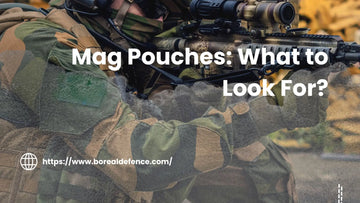Let’s face it, your tactical belt setup can either make life easier or slow you down. If you’re running drills, carrying gear for a shift, or just want a solid battle belt for your weekend range days, setting it up right is key. A sloppy belt costs time. And in the real world, seconds matter.
This guide walks you through choosing the right belt, laying it out, and fine-tuning it so it fits like it was built just for you. Let’s get into it.
Start with the Right Tactical Belt
Before slapping on pouches and holsters, you’ve got to choose a belt that fits your needs and body. Not all tactical belts are created equal, and trust me, not all of them are comfortable after 4 hours in the sun.
Invest online today: OG Belt (Overt Gunfighter Belt) Inner
Generally, you’ve got three main types:
- Two-piece belts – Inner and outer systems, held together by Velcro. Great for quick on/off.
- Riggers belts – Solid, single-layer belts with strong buckles. Often used for lighter setups or EDC.
-
MOLLE belts – Come with webbing for direct pouch mounting. Bulkier, but more modular.
If you’re going for the best tactical belt setup, most folks swear by the two-piece system. It's easy to throw on and holds everything tight without shifting.
You can also explore: Tactical Helmet Setup: Complete Guide for Beginners
What Gear Should You Actually Carry?
Your battle belt setup depends on what you're doing. No one wants a belt packed with gear you never use. Keep it lean. Keep it smart.
Here’s a simple breakdown that works for most people:
|
Position |
Item |
Why It Matters |
|
Front Left |
Rifle/Pistol Mags |
Quick reloads, dominant hand free |
|
Rear Left |
Dump Pouch |
Drop used mags, gloves, whatever |
|
Right Hip |
Holster + Pistol |
Fast draw, stable retention |
|
Rear Right |
IFAK / Med Kit |
Life-saving, needs to be accessible |
|
Optional |
Tourniquet, Flashlight |
Depends on mission or range day needs |
Don’t get caught in the “gear for gear’s sake” trap. Every piece should earn its place on your tactical belt.
You can also read: Tactical Gear for Outdoor Survival
How Does a Tactical Belt Actually Work?
A tactical belt works by shifting the load from your shoulders to your hips, so you’re not wearing a full vest just to carry basic gear. It keeps essentials close and consistent, no matter how you move.
The result?
- Faster reloads
- Easier transitions between positions
- Less fatigue over time
The best military tactical belt setups are built around these principles. Civilians and professionals alike benefit from that same streamlined access and comfort.
Invest Today: OG Belt (Overt Gunfighter Belt)
Fit and Comfort
If your belt’s sliding, bouncing, or cutting into your hips, it’s not set up right. And guess what? That’s going to slow you down when it counts.
Make sure:
- Your black tactical belt setup or any other colour sits snug at the waist
- Nothing should be flopping around when you run
- Holster rides high enough for a clean draw
- The med kit should be reachable with either hand
Padding helps. So does a flexible cummerbund or inner belt liner. And always do movement drills, kneel, squat, run, before deciding your layout is final.
Match Your Setup to Your Mission
Your belt should change depending on what you’re doing. That’s just practical. Here are a few setups based on different uses:
Examples of Tactical Belt Roles
- Range Training: - Pistol, two mags, dump pouch, basic med kit. Light and fast.
- Duty or Tactical Ops: - Pistol, 3-4 mags, IFAK, flashlight, comms, tourniquet.
-
Everyday Carry: - Concealed pistol, slim mag pouch, multi-tool or med item.
No setup is one-size-fits-all. A tactical belt setup should reflect your role, your skill level, and what you use, not what looks cool on Instagram.
You can also read: Plate Carrier Setup Guide
How to Wear a Tactical Belt?
It’s not rocket science, but lots of people mess this part up. Here’s how to wear your belt without making it miserable:
- Position your holster at about 3 o’clock (strong side)
- Mag pouches go on your support side, angled forward
- IFAK should be reachable with either hand, center back or side
- Tighten it just enough so it doesn’t shift, but not so much it cuts off your airflow
If your belt is flopping around when you run, it’s too loose. If it digs in when you sit, loosen it a notch. Small adjustments make a big difference over a full day.
Maintenance and Small Upgrades That Matter
Your belt is going to take a beating. Dirt, sweat, movement, weather, it all adds up. Keep it in shape by:
- Checking Velcro and stitching every few weeks
- Cleaning buckles and clips so they don’t jam
- Replacing saggy or stretched-out pouches
- Swapping gear when your mission changes
Little tweaks over time keep your tactical belts running smoother and lasting longer. You’ll also figure out what doesn’t work and can slowly build toward the best tactical belt for your style.
You can also read: How To Repair A Ripped Plate Carrier And Other Nylon Kit?
Final Thoughts
Here’s the bottom line, your tactical belt setup should serve you, not the other way around. Build it smart, test it hard, and adjust as you go. Whether you’re using it for competition, work, or readiness, a well-built belt keeps you faster, safer, and more efficient.
Equip yourself with Boreal Defence tactical gear, engineered for performance when it matters most.
People Also Ask:
How to wear a tactical belt?
Wearing a tactical belt starts with getting the fit right. First, place the inner belt through your belt loops. Then attach the outer belt with your gear already mounted. The belt should sit just above your hips, tight enough to prevent movement but loose enough to allow breathing and full range of motion.
What is a tactical belt used for?
A tactical belt is used to carry essential gear such as a sidearm, extra magazines, medical kit, flashlight, and other tools, while keeping it accessible and secure. It's a vital part of many military tactical belt setups, law enforcement duty gear, and even civilian loadouts for training, competition, or personal readiness. The goal? Quick access without the need for a full chest rig or vest.
What should be on a tactical belt?
At a minimum, a tactical belt setup should include:
- A secure holster for your pistol
- Extra mag pouches (rifle and/or pistol)
- An IFAK or basic trauma kit
- A dump pouch
- Optional: flashlight, multi-tool, radio, tourniquet
Keep it practical—every item should serve a real function. If it’s not used, lose it.
How to properly wear a tactical belt?
To wear a tactical belt properly, adjust it to sit just above your hip bones. Your gear should be evenly distributed to avoid imbalance, with heavier items like a pistol holster placed on your strong side and medical gear on the opposite side or rear. Make sure it’s snug, doesn’t bounce when you move, and that all gear is positioned for natural, instinctive access.
What color does your belt have to be in the Army?
In the U.S. Army, belt color usually depends on the uniform. For example:
- OCP uniforms usually require a tan or coyote brown belt
- ASU (Army Service Uniform) belts are typically black or white, depending on the dress code
- Tactical belts used during field training or combat ops often match your gear in coyote, multicam, or black for uniformity







